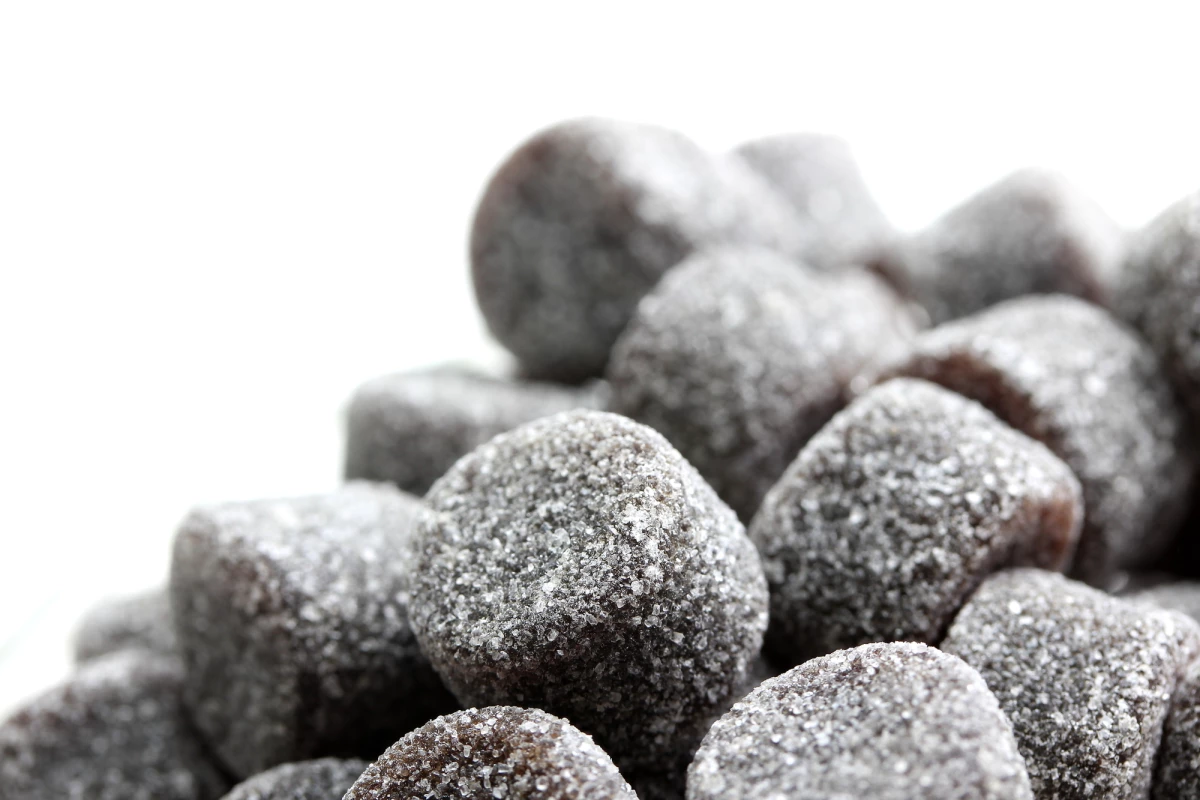Researchers have uncovered the mechanism by which our taste buds detect ammonium chloride, exemplified by the distinct taste of salty licorice, popular in Scandinavia and the Netherlands. They say the discovery provides evidence for the existence of a sixth basic taste.
After being identified by Kikunae Ikeda in 1908, umami was finally recognized as a distinct taste in 1990, joining what was, until then, the canonical four: sweet, sour, salty, and bitter. Now, a study led by researchers from the USC Dornsife College of Letters, Arts and Science has found evidence of basic taste number six, ammonium chloride.
“If you live in a Scandinavian country, you will be familiar with and may like this taste,” said Emily Liman, the study’s corresponding author. Liman’s referring to salty licorice, a confection with added ammonium chloride, which gives it its distinct flavor: bitter, salty, and a little bit sour.
Taste occurs when ingested chemicals interact with specialized taste receptor cells (TRCs) on the tongue and palate. Different TRCs respond to each of the five basic tastes and release neurotransmitters onto nerves that send signals to the brain that allow the nervous system to determine whether what’s being eaten is perceived as bitter, sweet, umami, sour, salty or a mix of all five.
Foods that taste sour are high in acids, meaning they’re low in pH and high in hydrogen ions. When sour TRCs are exposed to acids, they produce an electrical signal due to the movement of hydrogen ions across the cell’s membrane. The researchers previously discovered that sour TRCs express the otopterin1 (Otop1) gene that encodes a protein, OTOP1, to form a proton channel which gives cells the ability to detect low pH and sour taste.
In the current study, the researchers set out to test the contribution of sour TRCs and OTOP1 to the tongue’s ability to sense ammonium chloride. They introduced the Otop1 gene into lab-grown human cells and exposed some of them to acid or ammonium chloride. They found that ammonium chloride activated the OTOP1 receptor as effectively as acid. Tests on mice confirmed that those with the Otop1 gene avoided ammonium chloride, while those with the gene knocked out didn’t.
Ammonium and its gas, ammonia, the breakdown products of amino acids, are generally toxic to humans and other animals, many of whom have the ability to detect and respond to environmental ammonium/ammonia. Based on their findings, the researchers speculated that the ability to taste ammonium chloride may have evolved to help organisms avoid harmful substances.
“Ammonium is somewhat toxic,” Liman said. “So, it makes sense we evolved taste mechanisms to detect it.”
The researchers observed differences across species. Human and mouse OTOP1 channels were strongly activated by ammonium chloride, chicken OTOP1 channels were more sensitive, and zebrafish were less sensitive to ammonium chloride. The researchers say these species differences reflect the ecological niches of each organism. Birds, for example, are known to be less sensitive to sour taste, while needing to avoid ingesting the ammonium chloride present in their droppings.
The researchers plan to explore the OTOP1 receptor’s response to ammonium chloride further in the hopes of uncovering more about its evolutionary significance.
While saying that food is “ammonium chloride” isn’t a particularly attractive way of describing how something tastes, perhaps foodies will come up with a better name, and it may one day join the other five basic tastes.
The study was published in the journal Nature Communications.
Source: USC Dornsife





